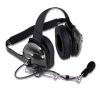Back to Kelvin Reynolds's Blog

Caveat Emptor: Please Read this!
Hints and Challenges for Radio use
Caveat Emptor
The popular use of low-cost handheld radio transceivers for pit to car communications is hard to beat in terms of an affordable solution for amateur motorsport. These transceiver devices which are readily available globally and locally are typically designed to operate on this part of the radio spectrum:
VHF: 136-174 MHz
UHF: 400 to 480 MHz
Transmitting power varies considerably between 500 mw to around 5 watt whilst actual output in operational conditions is frequently less than this, they are sufficient for use at most local motorsport venues. They are low cost and vary in quality and durability and because they are available, one cannot conclude that they are ICASA approved. Some are and some aren’t.
Most will typically transmit 2 to 3 km in ideal Line of Sight conditions and with advanced antennas, they are capable of a lot more.
- Limitations of Line of Site communications
- RF and other Interference
- Licensing and availability of bandwidth
- Conflict with local amateur radio hobbyists
You can reasonably expect to be able to communicate with your race car on most tracks in South Africa but Kyalami does hold specific challenges when communicating to and from the pit lane.
Radio transmission requires a clear path between antennas known as radio line of sight (LoS). Line-of-sight is defined as the straight line distance, clear of any objects, between the antennas.
A line of sight is the direct free-space path that exists between two points. Using binoculars on a clear day, it is easy to determine if a visual line of sight exists between two points that are kilometres apart. To have a clear line of sight there must be no obstructions between the two locations but one must also consider the Fresnel effect. If a hard object, such as a building, is close to the signal path, it can damage the radio signal or reduce its strength. This happens even though the obstacle does not obscure the direct, visual line of sight.
The Fresnel zone for a radio beam is an elliptical area immediately surrounding the visual path. It varies in thickness depending on the length of the signal path and the frequency of the signal.
When a hard object protrudes into the signal path within the Fresnel zone, diffraction can deflect part of the signal and cause it to reach the receiving antenna slightly later than the direct signal. If trees or other 'soft' objects protrude into the Fresnel zone, they can attenuate (reduced the strength of) a passing signal this is true at Killarney.
In short, the fact that you can see a location does not mean that you can establish a quality radio link to that location but this would be the exception rather than the rule.
There are some options to improve the line of sight transmissions but they are not always possible:
- Raise the antenna mounting point on the car.
- Locate a crew member on the roof or another part of the track to relay messages.
- Use a Repeater ( license Required)
Industrial applications typically operate in “license free” frequency bands, also referred to as ISM (Industrial, Scientific and Medical). The frequencies and power of these bands vary from country to country. The most common frequencies encountered are:
- 2.4 GHz – nearly worldwide
- 915 MHz band – North America, South America, some other countries
- 868 MHz band – Europe
- 464 MHz in South Africa
As frequency rises, available bandwidth typically rises, but distance and ability to overcome obstacles is reduced. In other words, UHF transmissions are more LoS challenged than that of VHF.
However, lower frequencies require the longer antenna.
The more sensitive the radio, the lower the power signal it can successfully receive, stretching right down to the noise floor. The receive sensitivity of a radio improves at lower frequencies.
RF background noise comes from many sources, ranging from solar activity to high-frequency digital products to all forms of other radio communications. That background noise establishes a noise floor which is the point where the desired signals are lost in the background ruckus. The noise floor will vary by frequency.
Typically the noise floor will be lower than the receive sensitivity of your radio, so it will not be a factor in your system design. If, however, you’re in an environment where high degrees of RF noise may exist in your frequency band its time to move.
